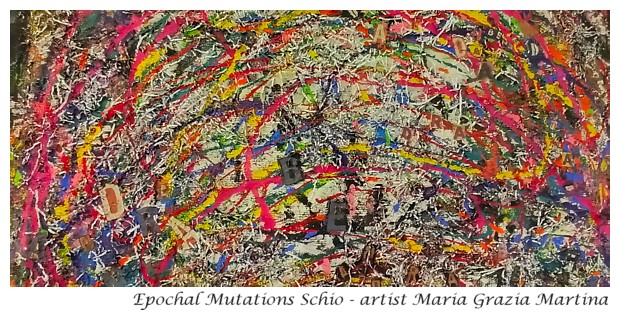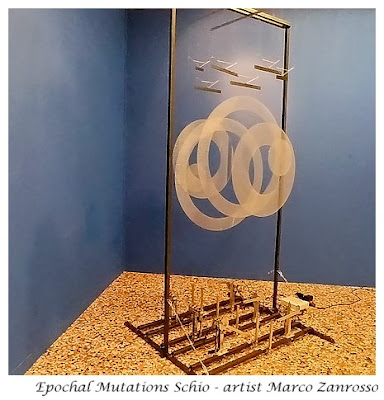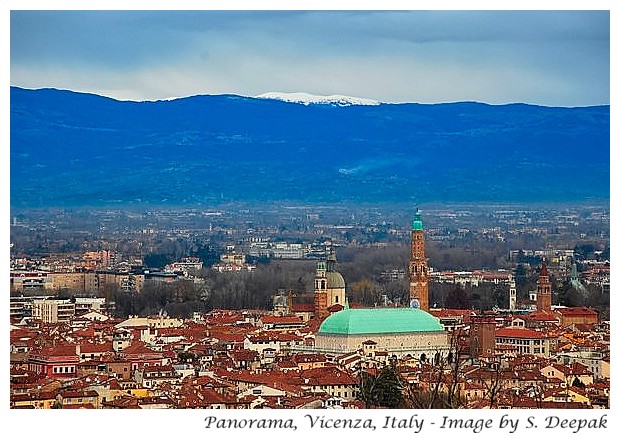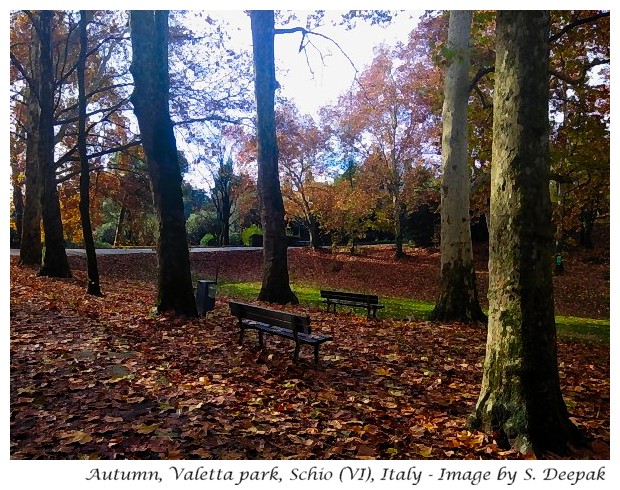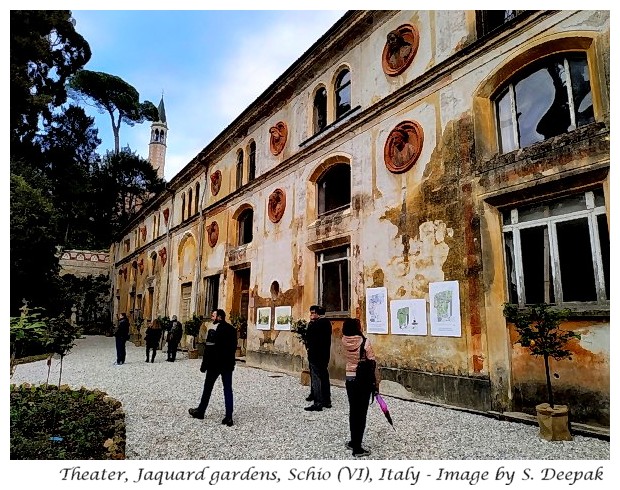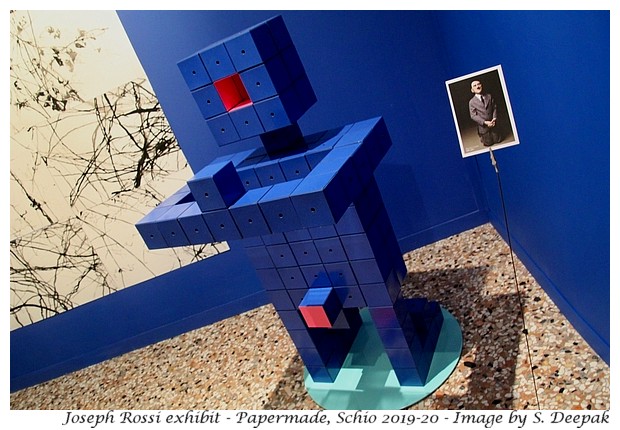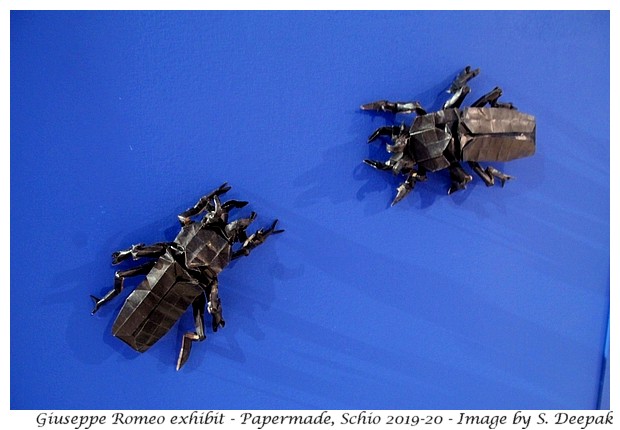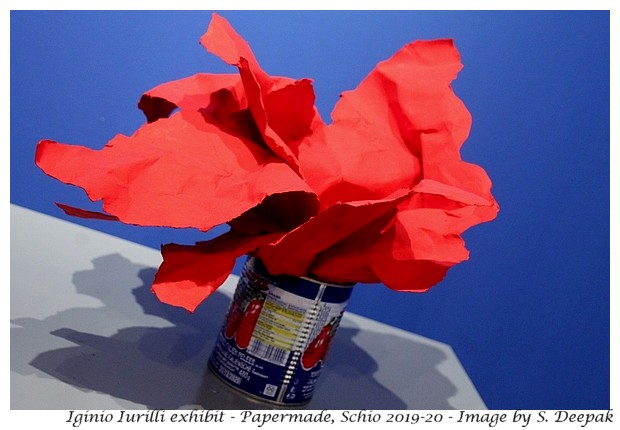Schio is a small town located on the foothills of Alps mountains. If you like history, culture and picturesque places where you can go for walks, then Schio is worth a visit, as this post will show you.
I will do a separate post for all the beautiful places around Schio, and there are a lot of them. This post is limited to the places in or near the city centre.
Schio - General Information
Schio comes under the province of Vicenza (28 km away) in the Veneto region. Nearby other well-known towns include Venice (120 km), Verona (95 km) and Padova (67 km). It is located in the northern part of Veneto, on the foothills of mountains known as Piccole Dolomiti (small Dolomites). It is connected to Vicenza by local trains (1 hour journey) and the state bus service. Schio's history goes back to at least the Roman times when it was called Scledum.
Vicenza is on the Venice-Milan and Venice-Trento-Bolzano train lines, and is thus well connected to trains from Switzerland, Austria and northern Europe. On the other hand, to go to Rome and south Italy, you need to change the train at Padova.
Schio was famous in 19-20th centuries for its wool mills. The biggest mill belonged to the Rossi family. Because of those wool mills it was one of the important industrial towns and was called the Manchester of Italy.
A hill crosses the town from south-east to the north-west - the eastern tip of this hill has the Duomo (cathedral) and the castle of Schio, while a Cappuchin monastery occupies the western end of this hill. A historical lithograph of Schio from 1864, commissioned by Alessandro Rossi, in the image below (curtsey @schiocultura) shows the area of Fabbrica Alta, as well as the San Rocco church on the hill in the right side with the Pasubio mountain in the background.
With this basic information, let me start with my list of 10 things to see/visit/do in the centre of Schio.
1. Duomo of Schio
The Duomo (Cathedral) of Schio is located in the city centre on the Rossi square and is an imposing structure atop a hillock, converted into a high platform with stairs going up on the two sides. It is dedicated to St. Peter. It was built in the 14th century. The present layout of the buildings was given more recently - it was started in 1747 and completed almost 130 years later in 1879.

The entrance of the cathedral has the sculptures of the 4 evangelists and a strip of bass-relief showing episodes from the life of St. Peter. Inside, among the different art works you can see a Madonna by the Venetian artist Jacopo Palma from the 16th century.
You can also admire the view of city and the surrounding mountains from the terrace of the Duomo.
2. Castle of Schio
The old castle of Schio was located at a higher level compared to the Duomo hill. It was built in the iron age and was dismantled in 15th century. Today only the old tower of the castle along with a more recent church (Santa Maria della Neve) remain on the hill. The church is no longer used for religious purposes and hosts the photography club of Schio.

Stairs from different sides of the hill go up to the castle, making it a short but invigorating walk. On the hill in front of the church you can see the base of two old towers of the castle. From here you also have a lovely view of the mountains surrounding the city.
At the base of the castle hill, a tunnel was constructed during the Second World War as a bomb-refuge. It is around 100 metres long and is now used by a local dairy company for stocking its local cheese, sold as "Formaggio della Grotta" (The cave cheese of Schio).
3. St. Francis church
The 15th century St. Francis church is located at the north-eastern edge of the central hill. It is one of the most beautiful buildings of Schio, with a stone bell-tower. Among the artworks, it hosts a luminous altarpiece by the artist Francesco Verla from early 16th century, which has been recently renovated.

Next to the church is an old Franciscan monastery, which does not have any monks at present. Part of it is used by a woman's self-help group called Daisy - they accompany the tourists to visit the church on Friday & Saturday afternoons. The church also opens in the mornings for the daily Mass.
4. Valletta
In front of the St. Francis church starts the Parco della Valletta (Little valley's park), a green oasis in the centre of Schio. It is characterised by century old trees and pathways going up and down the hill. From the park some of the views of the surrounding mountains are beautiful.
Coming out from St. Francis church, if you follow the road going downwards on the left (Via Grumi dei Frati), you can walk down to see a small beautiful chapel along the roadside - it is the 16th century chapel called Madonna della Salute, with a small water-canal passing underneath it. Behind the chapel is an arch from where you can climb the stairs to go back towards the Castle.

To the left of the chapel, another set of stairs also take you up towards the castle.
5. Piazza Rossi & Piazza Garibaldi
Via Pasini is the main road with shops passing through the old city centre of Schio, starting near Piazza Rossi and the Duomo. Piazza Garibaldi marks the beginning of Via Pasini. This is a pedestrian area of Schio. The two little squares, Piazza Garibaldi and Piazza Rossi, are inter-connected and have different bars with tables on the street, where you can sit and soak in the city atmosphere. Weekends usually have live music shows in one of the bars, along with buskers playing music on the sides.

From Piazza Garibaldi, the road going up towards the castle has another couple of bars that you may wish to explore and to taste some of the local beers. If you are visiting Schio, remember to spend an evening sitting there and watching the people having a drink while they exchange the latest gossip.
The city organises different festivals including the British Day (in October) and Cosplay (in April). On Wednesday and Saturday mornings it has the weekly market. The area of Piazza Rossi-Piazza Garibaldi is usually the central point of all these festivities & markets. While you are there, do not forget to look at the historical statue of Il Tessitore (the weaver) in Piazza Rossi, which is the symbol of Schio.
6. Palazzo Fogazzaro
Along Via Pasini, the central road of old Schio, you can see the municipal building (Garbin Palace) and the 18th century Fogazzaro Palace. Built in the Palladio style, the Fogazzaro Palace is the cultural centre of Schio. It hosts many history, art and photography exhibitions, seminars and events, including the Biennale of Schio which focuses on Papermade art, which has been held regularly since 2013 and brings together artists from numerous countries across the world.
Till early part of 20th century, the main water canal of Schio called Roggia Maestra used to cross Via Pasini with a bridge on it and was therefore known as Via Oltre-Ponte.
The image below shows an art work by Wilhelm Senoner from an exhibition held in Fogazzaro Palace in 2019-20.

Across the road, you can take the Garbin underpass to go to Piazza Statuto to look at the main entrance of the municipal building. This square usually hosts a car parking, so it does not look very exciting. However on the days of the weekly market (Wednesday and Saturday), it gets a make-over and you can admire it better.
7. Toaldi Capra Palace
Via Pasubio, the second main street of the old city centre, starts from Via Pasini in the middle and proceeds northwards. On this road you can see different medieval houses of the rich families of Schio including the 13th century Toaldi-Capra palace. This building was used as the municipal building till the first World war. The first floor of this building has frescoes from 15th century.
Like the Fogazzaro palace, Toaldi Capra Palace is also an important site of cultural initiatives in Schio. Its courtyard hosts an open-air theatre which has dance and theatre performances, as well as, the summer film festival (the image below shows a historical enactment of the fall of the Venice Republic in 1797 in the open-air theatre of the Toaldi-Capra Palace).

The palace also hosts art and photography exhibitions, while the rooms on the first floor hold conferences and seminars.
Via Pasubio is also the site of biannual Sareo Art Festival (which had been suspended between 2020-2021 due to Covid-19) during which local artists and artisans show their works in an open air exhibition.
8. Jacquard Gardens and Industrial Archaeology
In the 18th century Schio had become an important industrial centre with different wool mills. These were powered by the waters of Leogra torrent through a canal known as Roggia Maestra. For the workers of the wool mills, new housing areas were created. The old mills, the houses of the mill-workers and the water canals, together form the industrial archaeology area of Schio.
There are 3 old wool mills near the Schio city centre. The Conte wool mill, which is now converted into a cultural space (the Shed) where art and photography exhibitions are organised. It is located on Via Pasubio, a little further down the road from Toaldi-Capra palace. Inside, this building you can also see the water canal of Roggia Maestra with its swirling waters (the image below shows an art exhibition in the Shed).

A little further down Via Pasubio is the Fabbrica Alta (High Mill), which was the biggest wool mill of Schio and belonged to the Rossi family. The grounds of Fabbrica Alta hold music shows and garden shows while the city is discussing how best to use its old buildings.
Across the road from the entrance of Fabbrica Alta are the Jacquard gardens, built for the mill workers in late 19th century. The gardens include a theatre, artificial caves, fountains, a glass-house and some sculptures. This park is open on summer weekends. From one side of the gardens, you can also admire the beautiful San Rocco church with its lovely bell-tower, located on the Castle hill, next to the gardens.
The third wool mill, Cazzola, was located further outside the central area along Via Pietro Riboli. During the first world war, this was converted into a field hospital where the well-known American writer
Ernest Hemmingway worked as an ambulance driver. One of the side-streets behind the old wool-mill is named in his honour.
To look at the area which had the mill-workers houses, you need to walk from the city centre towards the Leogra torrent. Different criss-crossing roads such as Fusinieri, Tessitori, Rossi, Cimatori, etc. are all part of the industrial archaeological area.
You can also take a short walk along the torrent in the Via Lungo Leogra and take a selfie from its bridge, from where you have an excellent view of some of the beautiful mountains surrounding the town (the image below shows the torrent with reduced water-flow in the summer).

9. Civic Theater
The Civic Theatre was built in early 20th century and is situated on Via Maraschin. During the theatre season, it has a rich calendar of plays and concerts. Parts of the civic theatre are being renovated (winter 2020). Inside, the theatre has a beautiful frescoed first-floor hall.
The Civic Theatre also conducts theatre, dance and creativity workshops with schools, elderly persons and other groups.
Across the street from the Civic Theatre, you can walk to big central square of Schio - Piazza Falcone-Borsellino. It has a model showing the different mountains around the city and their names & heights. It also has a war memorial. Finally, my favourite place in this square, is a sculpture by Alfonso Fontana of a fountain with birds and children (the image below shows an overview of Falcone-Borsellino square seen from the back of Fogazzaro Palace).
10. Mother Bakhita church
Mother Bakhita was a catholic nun in the congregation of Figlie della Carita Canossiane (Canossian Daughters of Charity). Originally from Darfur (Sudan), she was kidnapped and sold as a slave when she was 9 years old. Destiny brought her first to Venice and then to Schio in late 19th century. She died here in 1947 and was declared a saint in 2000.

Followers of Saint Bakhita come to visit Schio from different countries. Her church is located in Via Fusinato, not far from the Duomo.
Conclusions
As you can see, even if Schio is only a tiny town, it has a few things to see and do for the visitors. The town is surrounded by beautiful places to visit, especially in the mountains and lakes, starting with the two mountains which guard the north and east of the town - Monte Summano and Monte Novegno. About all these, I will write in another post.
I first came to visit Schio in 1982. My wife's family had been living in the old mill-workers' area since late 19th century. After my retirement, we are living in that same family house where my wife, her father and her grand-father were born. I love living here - I love the view of the mountains, its roads going up and down and the numerous cultural opportunities it provides. It just needs a short bicycle ride to leave the city and to be in the beautiful countryside surrounding Schio, as shown in the view from Via Broglio below.

I had decided to limit this post to 10 places. This meant that I was unable to include some of my favourite places of the city in this list.
For example, I also recommend the walk from the castle towards the Capuchin monastery in the evening for breath-taking views of the mountains; and if you have time, go to the crossing between Via Bosco and Via Fogazzaro to see the lavandaia (washer woman) sculpture and the place along Roggia Maestra where the local women used to wash laundry till mid-20th century.



